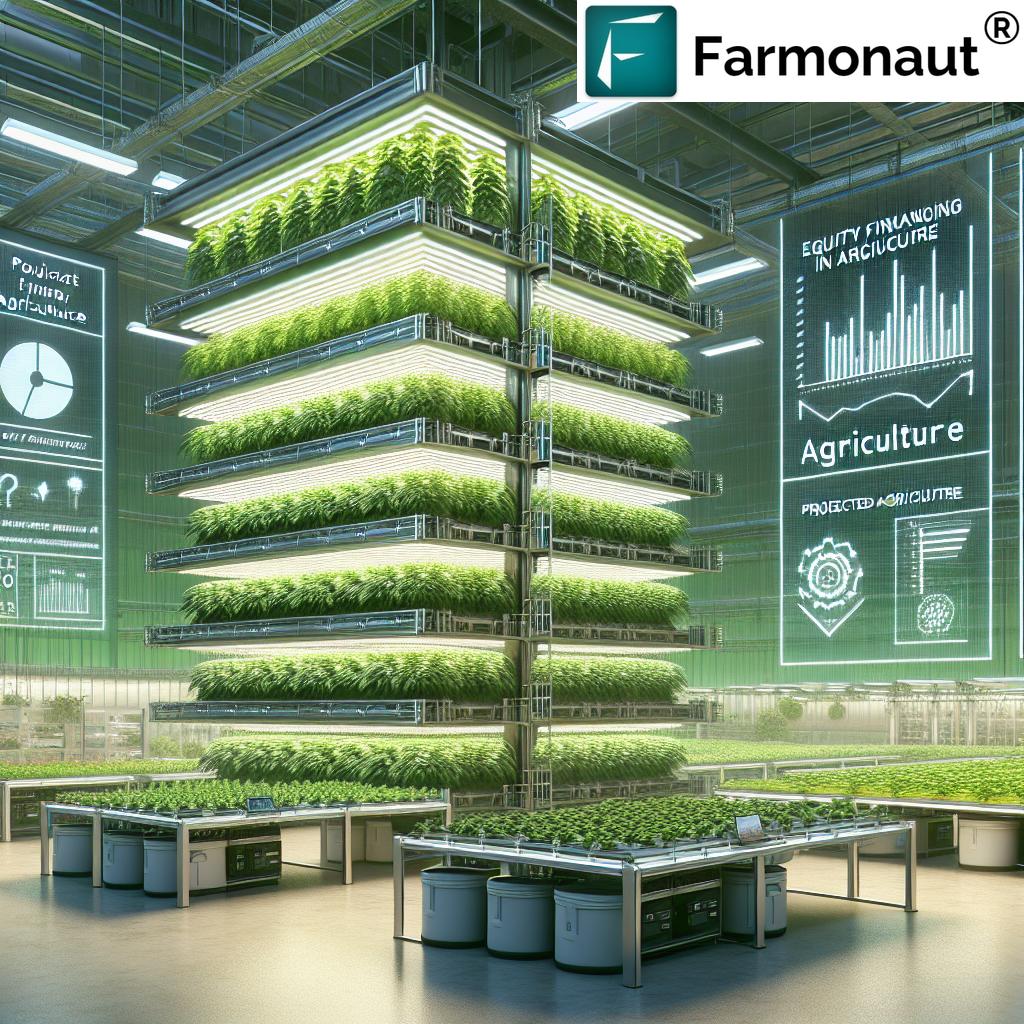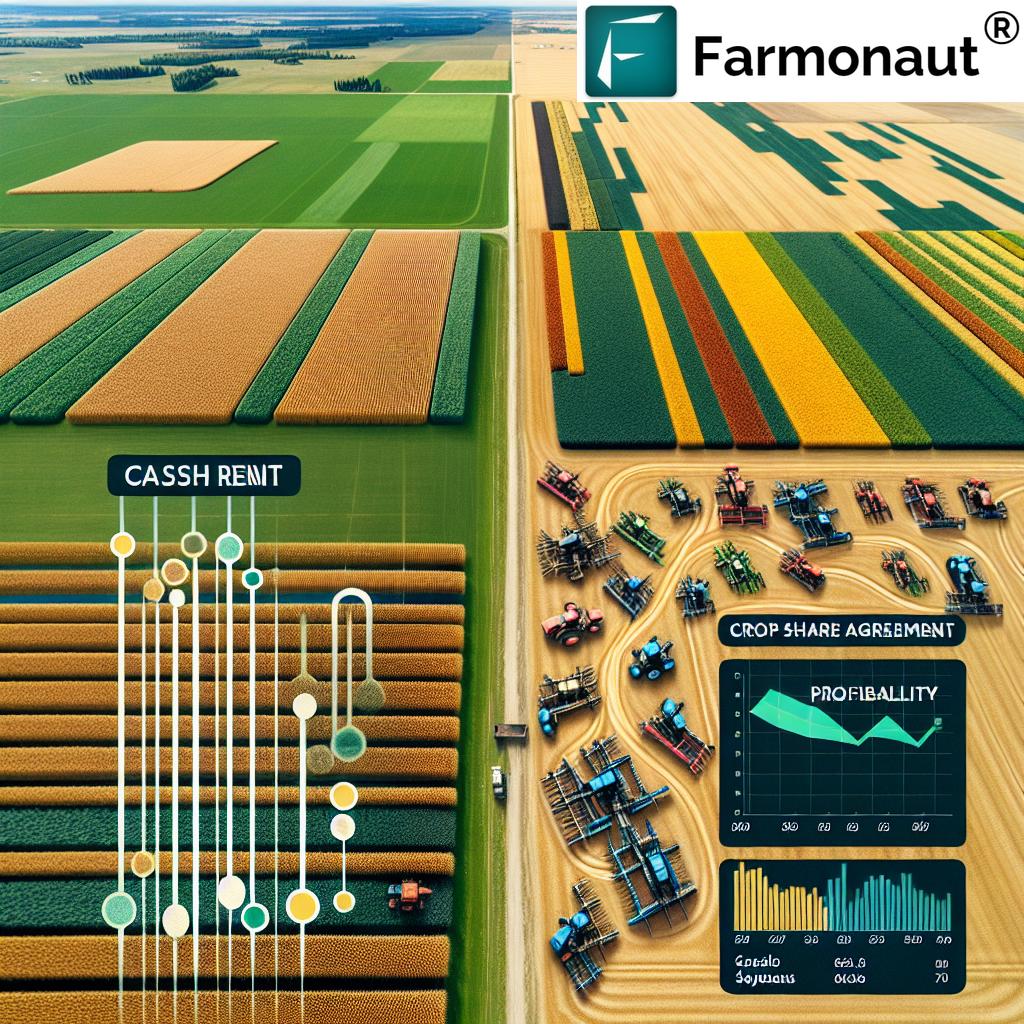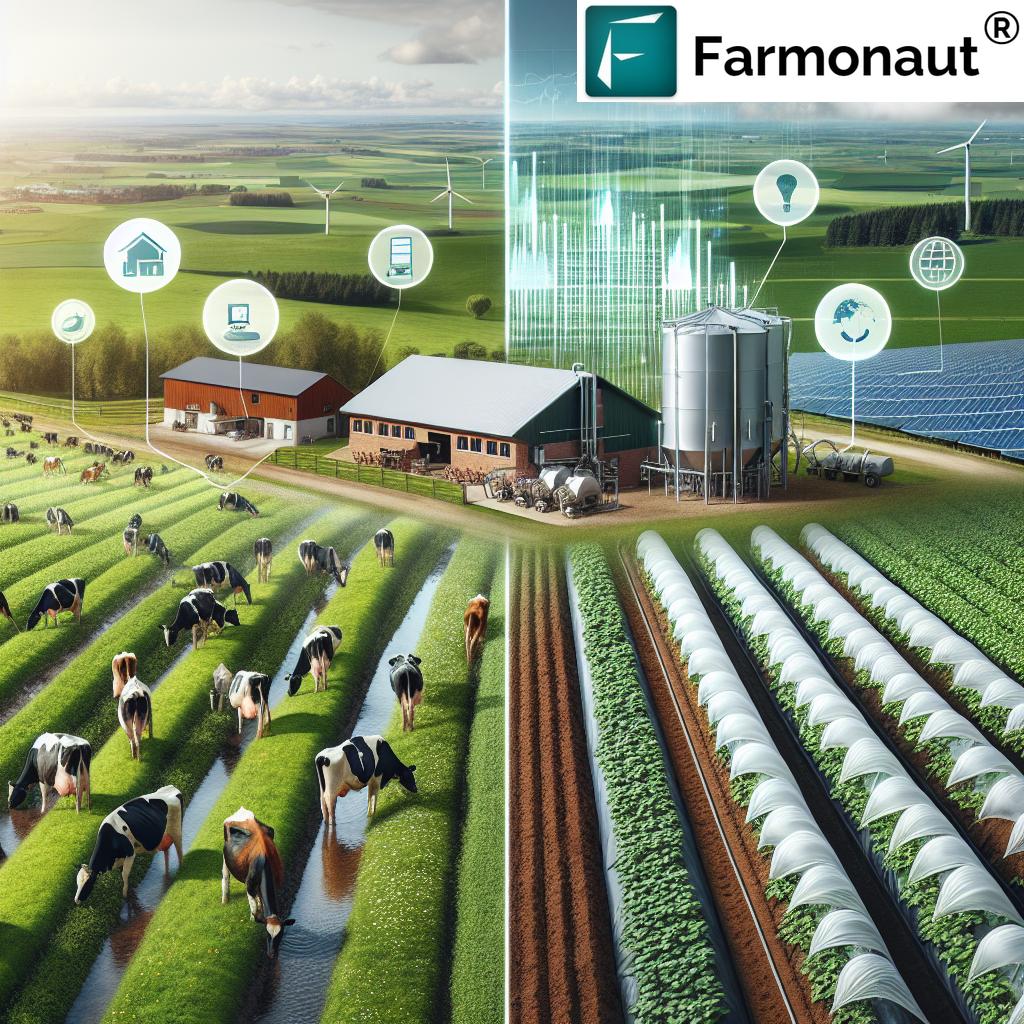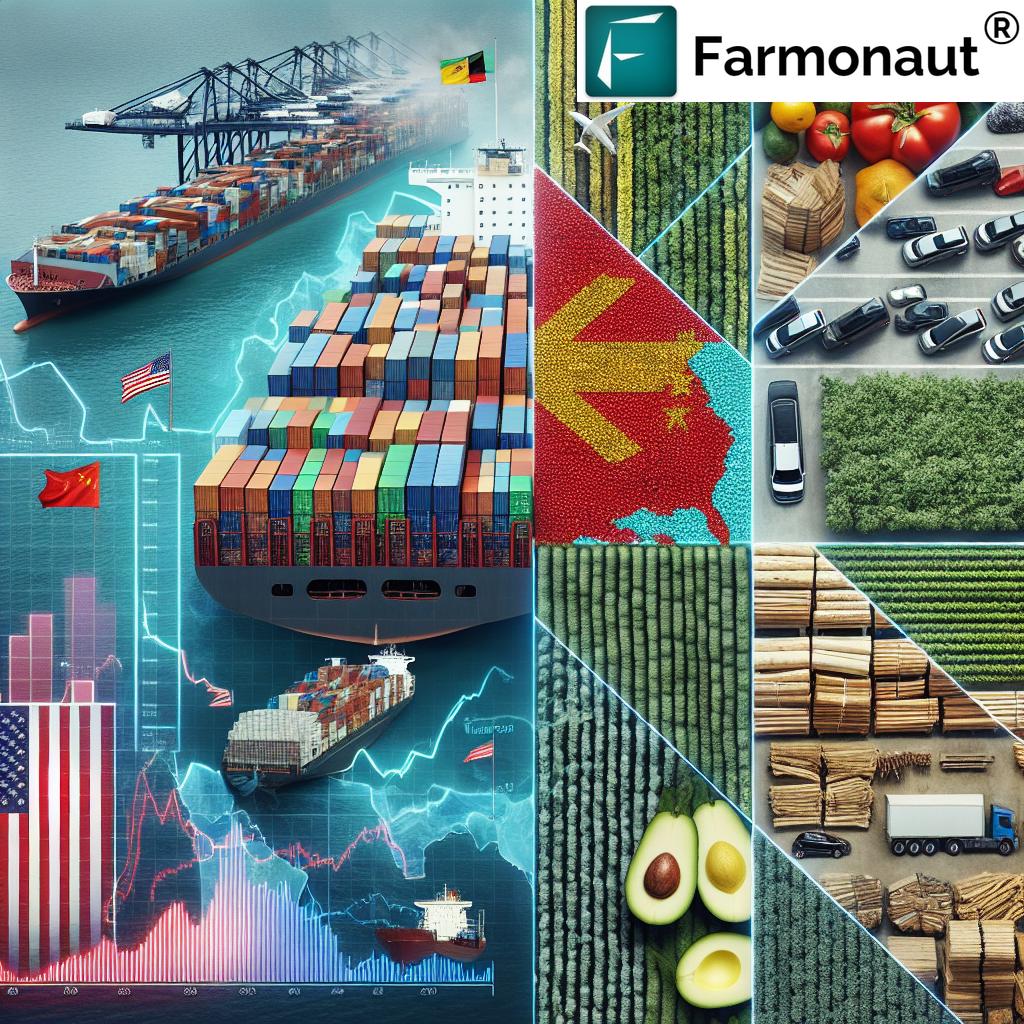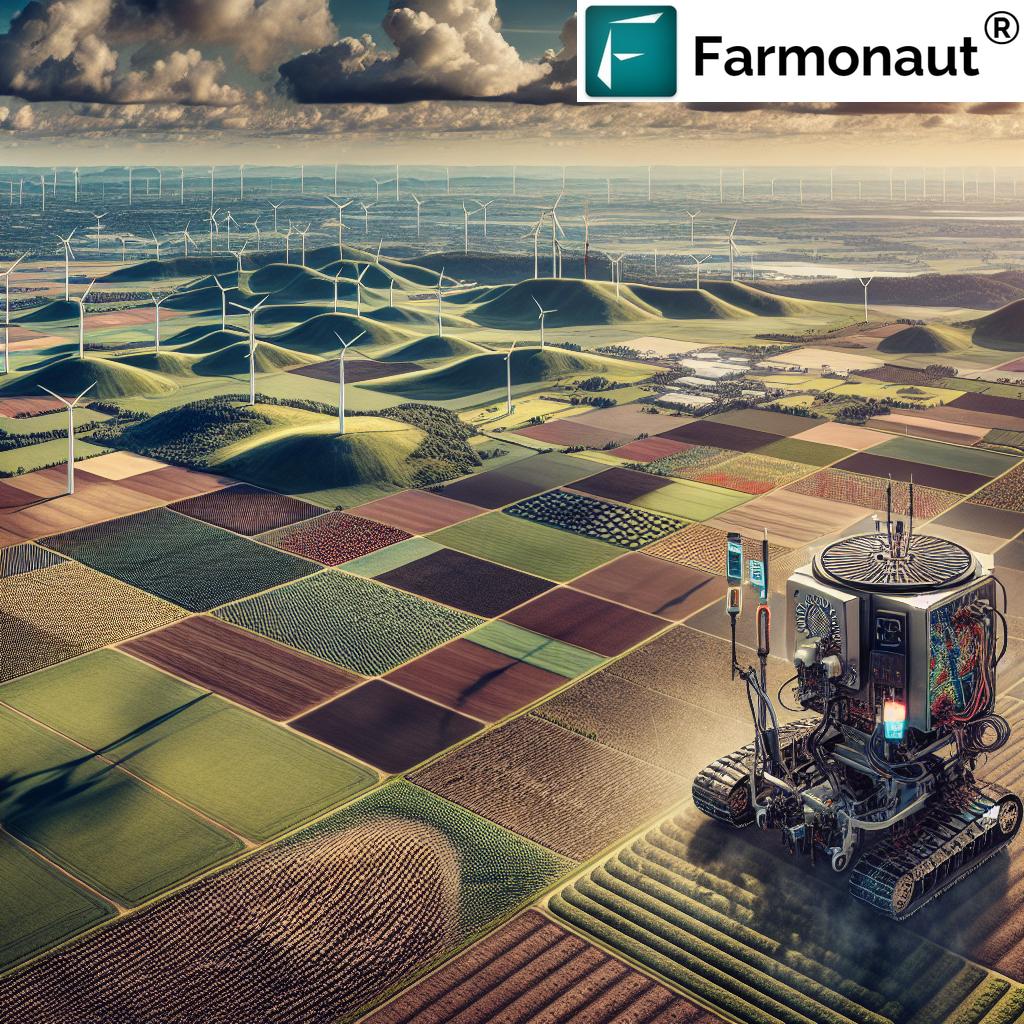“Ontario’s vertical farming sector is projected to attract over $150 million in equity investments by 2025.”
2025 Ontario Vertical Farming Tech: Equity Investment Insights
The future of Ontario’s agriculture industry is here, and it’s vertical. As vertical farming technology rapidly evolves, we see new opportunities, risk factors, and dynamic financing strategies shaping the landscape for both innovators and investors. In this comprehensive analysis, we will dissect the key drivers, risk factors, investment trends, technology advancements, and future projections that define the 2025 vertical farming market in Ontario, including actionable insights for those considering equity investments in this promising sector. We also explore the critical role of controlled environment agriculture (CEA) and how companies—like Nature’s Miracle and Farmonaut—are advancing agriculture technology products, data-driven services, and sustainable business models.
Table of Contents
- Introduction: Equity Investment and Ontario’s Vertical Farming Boom
- Ontario Vertical Farming Technology Market Overview
- Equity Financing in Agriculture: Structures, Risks, and Trends
- Nature’s Miracle: Latest Financing & Industry Position
- Major Risk Factors in Ontario’s Agriculture Market
- Future Trends: The Direction of Ontario Vertical Farming
- 2025 Ontario Vertical Farming Tech Investment Landscape (Estimated Values)
- Farmonaut’s Role in Advancing Vertical Farming Ecosystems
- Competitive Agriculture Strategies: Maximizing Equity Investments
- Costs of Agricultural Development & New Investment Opportunities
- Farmonaut: Precision Tools and Services Supporting Industry Growth
- Farmonaut Subscription Options
- FAQ: Ontario Vertical Farming, Equity Financing & Technology
- Conclusion: The Next Era of Ontario Vertical Farming
Introduction: Equity Investment and Ontario’s Vertical Farming Boom
Ontario’s agricultural sector is experiencing a revolution, fueled by the convergence of vertical farming technology, innovative equity financing in agriculture, and a rapidly shifting market landscape. Modern controlled environment agriculture (CEA) is transforming the way we produce, monitor, and distribute food. Advanced agriculture technology products and services are not only boosting productivity but also opening untapped investment opportunities in vertical farming for both institutional and private investors.
Recent financial news confirms this momentum: Nature’s Miracle Holding Inc. (OTCQB:NMHI), a leader in vertical farming technology, has entered a $20 million equity purchase agreement, further validating investor confidence. This signals a period where risk, innovation, and projected agriculture market growth intersect—presenting both challenges and unprecedented potential for those prepared to engage. In this post, we’ll assess market projections, risk factors in the agriculture market, estimated costs, and strategies leading to a competitive edge in Ontario’s thriving vertical farming sector.
Ontario Vertical Farming Technology Market Overview
Ontario is a leader in adopting vertical farming technology, with both established companies and emerging startups expanding the use of hydroponics, aeroponics, and automated CEA approaches. The province’s supportive regulatory environment, research initiatives, and robust supply chain for agriculture technology products has created a fertile ground for innovation.
Let’s examine the core elements that characterize Ontario’s current market landscape:
- Market Growth Potential: Driven by advances in controlled environment agriculture, Ontario is projected to see more than $150 million invested in vertical farming equity by 2025. Investors rank this sector among the fastest-growing agri-tech opportunities in Canada.
- Leading Companies: Firms like Nature’s Miracle, as well as technology innovators focusing on AI, automation, and resource optimization, are driving business model shifts and reimagining what’s possible in food production.
- Technology Integration: The implementation of data-driven platforms, such as Farmonaut’s satellite-based monitoring and AI advisory services, enables cost-effective precision agriculture. These tools give new and existing players access to analytics previously limited to large-scale operations.
- Investor Interest: Increasing demand for sustainable local produce and risk mitigation features of vertical farming attract both venture capitalists and private equity funds seeking diversified agricultural investments.
As we explore further, we see that the market’s projected growth, technological advancements, and evolving financing mechanisms are inseparable from the risk considerations and business dynamics unique to this industry.
Equity Financing in Agriculture: Structures, Risks, and Trends
With the rising momentum in the agri-tech sector, equity financing in agriculture takes center stage. Equity investments allow businesses to secure capital without increasing debt loads, providing investors with ownership stakes and a share in the company’s future growth.
Let’s break down the core aspects of equity financing in this field:
- Structures:
- Private and Public Equity: Firms may raise funds through private placements or, if publicly traded (like Nature’s Miracle’s presence on the OTCQB under symbol NMHI), through structured share offerings.
- Convertible Instruments: Equity financing often includes provisions for convertible preferred shares, which can be exchanged for common stock under favorable terms—seen in the recent $250,000 Series A investment announced by Nature’s Miracle.
- Multi-Stage Rounds: Ontario’s vertical farming sector sees investment rounds ranging from Seed to Series A/B+, aligned with each company’s business development and technology implementation milestones.
- Trends:
- Long-term Value Creation: Investors seek companies with advanced technology, scalable business models, and high alignment with future of agriculture industry trends, such as digital agriculture and sustainability.
- Due Diligence on Risk: Risk assessment covers operational resilience, supply chain management, regulatory compliance, and costs of agricultural development.
- Key Considerations:
- Equity investors require transparency on projected returns, competitive differentiation, and how innovation translates into real revenue growth.
- Investment Opportunities in Vertical Farming: The integration of AI, automation, and sustainability in controlled environment agriculture offers a potent combination of profitability and positive environmental impact.
Nature’s Miracle: Latest Financing & Industry Position
ONTARIO, Calif., May 7, 2025 /PRNewswire/ — Nature’s Miracle Holding Inc., a prominent player in vertical farming technology, recently announced a strategic equity purchase financing agreement with GHS Investments LLC. The deal grants Nature’s Miracle access to up to $20 million in capital over 24 months, reinforcing both the industry’s financial credibility and the investor appetite for Ontario’s vertical farming providers.
Key details:
- Nature’s Miracle (trading as “NMHI” on OTCQB) issued 1,503,759 common shares as part of the transaction.
- The investor made a $250,000 equity investment in Series A preferred stock, convertible at a price of $0.112 per share.
- The company plans to file a registration statement with the SEC to ensure compliance and transparency around its securities.
Forward-looking statements in such press releases reflect optimism but come with typical industry uncertainties and assumptions—from revenue projections and product development timelines to potential strategic shifts required by changing market or regulatory conditions. As always, thorough due diligence remains essential.
Major Risk Factors in Ontario’s Agriculture Market
No investment comes without risk. In Ontario’s vertical farming sector, the most relevant risk factors in agriculture market stem from a mix of business, operational, and competitive sources. Let’s explore what both companies and investors should monitor:
- Regulatory Uncertainty: Changes in environmental, health, or financial regulations can impact operations, offering both opportunity and risk.
- Rapid Technological Change: Advanced vertical farming technology demands ongoing investment in R&D. The inability to keep up can put a company at a competitive disadvantage.
- Supply Chain Resilience: Fluctuations in the availability or costs of manufacturing materials (steel, rubber, specialized lighting) may disrupt business plans or increase the estimated cost of agricultural development.
- Market Competition: As more entrants join the Ontario market, the risk of commoditization grows, requiring strong differentiation through technology and services.
- Financial Risks: Achieving profitability is not guaranteed—factors such as cost of capital, scalability, and ability to attract/retain skilled talent can affect financial viability.
- Intellectual Property Risks: Ensuring technology and innovations are legally protected is a growing concern amid increased competition and cross-border challenges.
- Climate and Environmental Risks: Although CEA minimizes many traditional weather risks, macro-level environmental changes can still impact operational costs and long-term strategy.
Accordingly, comprehensive risk assessment and the development of competitive agriculture strategies are required to maximize returns and sustainability in this rapidly evolving sector.
Future Trends: The Direction of Ontario Vertical Farming
Ontario’s vertical farming sector aligns strongly with the future of agriculture industry. Several forward-looking trends are shaping its dynamics, providing both strategic priorities for businesses and guidance for investors evaluating future opportunities:
- Integration of Automation & AI: Automated systems for nutrient delivery, environmental monitoring, and predictive maintenance leverage data analytics to maximize yield and reduce costs.
- Satellite & Data-Driven Farming: Platforms like Farmonaut, using satellite imaging, AI, and blockchain, facilitate precision monitoring, resource optimization, and traceability—making them key assets for large-scale farm management.
- Carbon Footprint Tracking: Environmental accountability is central to continued access to both investor capital and favorable regulatory conditions. Tools such as Farmonaut’s carbon footprint management services allow agribusinesses to monitor, report, and reduce emissions effectively.
- Blockchain for Product Traceability: Supply chain transparency is increasingly demanded by buyers, consumers, and regulators. Blockchain-based traceability solutions by Farmonaut harden security and trust within agricultural value chains.
- Financial Technology Enablement: API-enabled verification of crop loans and insurance—enabled by platforms like Farmonaut’s crop loan & insurance verification services—facilitates access to financing and risk management for both farmers and lenders.
- API Integrations: Developers and enterprise customers can integrate real-time agri-data using Farmonaut’s satellite and weather API or learn more from the API developer documentation—extending technology’s reach into new commercial and research applications.
- Sustainability as Core Value: Market demand aligns with operational strategies that prioritize sustainable use of natural resources, minimized waste, and eco-friendly business models.
These trends signal the direction of both technology deployment and capital allocation within the Ontario vertical farming market from 2025 onward.
“Over 60% of Ontario agri-tech investors cite vertical farming technology as a top growth driver for 2025.”
2025 Ontario Vertical Farming Tech Investment Landscape (Estimated Values)
| Company Name | Technology Focus | 2025 Est. Market Share (%) | Est. Annual Revenue (CAD Millions) | Investment Round | Risk Factors | Future Trend Alignment |
|---|---|---|---|---|---|---|
| Nature’s Miracle | Hydroponics, CEA, Automation | 24 | 40 | Series A/B+ | Moderate | AI, Sustainability, Automation |
| AgriNext Ontario | Aeroponics, Sensor Networks | 14 | 17 | Series A | Moderate | AI, Automation, Data Integration |
| FreshTower Farms | Hydroponics, IoT Monitoring | 11 | 12 | Series A | Low | Automation, Sustainability |
| Nova Vertical | Automated CEA, AI Analytics | 8 | 8 | Seed | High | AI, Digital Transformation |
| UrbanLeaf | Aeroponics, LED Lighting | 7 | 6 | Seed | High | Sustainability, Automation |
| Harvest Node | Hydroponics, Blockchain Traceability | 6 | 5 | Seed | Moderate | Blockchain, Sustainability |
| Greengrid Solutions | Smart Irrigation, IoT | 5 | 4 | Seed | Moderate | AI, IoT Integration |
| VerticalGrove | Modular Farms, Automation | 4 | 3.5 | Seed | Low | Automation, AI |
| SproutIQ | Data-Driven LED Farming | 3 | 3 | Seed | High | AI, Digital, Data Science |
Farmonaut’s Role in Advancing Vertical Farming Ecosystems
While Farmonaut is not a manufacturer, marketplace, or regulatory authority, it stands at the cutting edge of agricultural data intelligence. As precision agriculture becomes foundational to projected agriculture market growth, Farmonaut’s technologies offer unique competitive advantages:
- Satellite-Based Crop Health Monitoring: Farmers and agribusinesses can monitor key indicators—such as NDVI, soil moisture, thermal stress, and pest pressure—across thousands of hectares, improving operational resilience and reducing risk factors in agriculture market.
- Jeevn AI Advisory System: Real-time weather forecasting and science-based crop management recommendations optimize yields and minimize resource wastage, supporting both small and large-scale operations.
- Blockchain Traceability: Transparency in supply chains enhances both business credibility and consumer trust, mitigating exposure to product recalls and fraud. Learn more about blockchain-based traceability here.
- Fleet and Resource Management: Efficient vehicle and asset management help agribusinesses minimize operational costs and environmental impact. Discover Farmonaut’s fleet management solutions here.
- API for Enterprise Integration: Businesses and developers seeking live agri-insights access the Farmonaut API and can explore implementation via the API Developer Docs.
- Carbon Footprinting: Large-scale vertical farms can now monitor, analyze, and reduce emissions with Farmonaut’s carbon footprint analysis tools.
These advances lower barriers to precision agriculture, deliver measurable economic value, and position Ontario’s vertical farming sector at the forefront of the future of agriculture industry.
Competitive Agriculture Strategies: Maximizing Equity Investments
In a fiercely competitive industry, robust strategies are required to maximize equity investment outcomes. Our analysis identifies several approaches that vertical farming technology businesses and their backers are using to gain an edge:
- Technology Differentiation: Companies prioritizing AI, automation, or traceability are most suited to withstand rapid shifts in consumer preferences and regulatory requirements, promising superior long-term value.
- Scalable Business Models: Subscription-based or platform-as-a-service offerings (such as Farmonaut’s model) promote predictable revenue streams and easier cost control.
- Broadened Service Offerings: Providing spectrum coverage—ranging from real-time monitoring to advisory services and financial product verification—attracts a wider customer base and increases retention.
- Risk Management: Focusing on supply chain resilience, diversification of production, and proactive compliance helps mitigate key risks and build investor confidence.
- Strategic Use of Data: Leveraging big data for operational optimization, resource allocation, and marketing enables companies to outmaneuver less data-driven competitors.
Equity investors evaluating new entries or existing firms in Ontario’s vertical farming tech landscape should prioritize these strategies, as they are correlated with sustained growth and profitability.
Costs of Agricultural Development & New Investment Opportunities
The costs of agricultural development in the vertical farming sector are highly variable, depending on facility size, technology stack, energy sources, and labor models. However, opportunities for optimizing both capital expenditure (capex) and operational expenditure (opex) abound, especially for firms leveraging state-of-the-art technologies:
- Facility Buildout: Upfront costs remain significant (land, high-tech infrastructure, environmental controls), but these are increasingly offset by productivity gains and reduced waste over time.
- Technology Adoption: Early integration of data analytics, automation, and real-time monitoring tools (like Farmonaut’s platform) minimizes unnecessary resource use and reduces both financial and environmental risk.
- Operational Efficiencies: Platforms providing AI-driven advisory services or carbon tracking—such as those found in Farmonaut’s portfolio—help drive down ongoing costs and support compliance with evolving eco-standards.
- Investment Opportunities in Vertical Farming: Both early-stage and later growth-stage companies are seeking strategic equity investments. Alignment with high-growth technology trends provides the most attractive risk/reward profiles for both corporate and private investors.
The aggregate effect of these innovations is to lower financial entry barriers, enhance operational resilience, and open the door to a more diverse set of investors and operators in the Ontario vertical farming ecosystem.
Farmonaut: Precision Tools and Services Supporting Industry Growth
To realize the full promise of vertical farming technology, sector participants require access to precise, affordable, and scalable tools. Farmonaut delivers this value across multiple core domains:
-
Crop Plantation & Forest Advisory:
For those interested in precision enterprise-level agriculture, Farmonaut’s crop plantation and forest advisory solutions provide expert, actionable insights, leading to higher yields and smart resource management. -
Blockchain-Based Supply Chain Traceability:
Tackling fraud and elevating food safety, Farmonaut’s product traceability module provides immutable records from farm to consumer. -
Large-Scale Farm Management:
If you manage multiple facilities or complex plantations, Farmonaut’s large-scale management tool allows seamless oversight and analysis, whether from a browser, Android, or iOS. -
Insurance & Loan Verification:
Integrate satellite-backed proof of cultivation for loans and claims—essential for both farmers and the financial institutions that back them. Read more about insurance & loan verification. -
Fleet Management:
Lower costs, optimize asset usage, and safeguard equipment with Farmonaut’s resource and fleet management services.
Farmonaut’s subscription options (see below) are designed to support farms of any size, giving access to real-time analytics, advisory tools, and affordable innovation regardless of scale and budget.
Farmonaut Subscription Options
Whether you are an individual grower, a large agribusiness, or a research institution, Farmonaut’s subscription-based services make the latest precision agriculture tools accessible to all. Explore flexible pricing for different levels of satellite monitoring frequency, advisory depth, and data integration.
FAQ: Ontario Vertical Farming, Equity Financing & Technology
What is vertical farming technology and why is it important in Ontario?
Vertical farming technology refers to the practice of growing crops in vertically stacked layers, often in controlled environments (CEA). In Ontario, it enables year-round food production, efficient use of resources, and reduces reliance on traditional agricultural land. Combined with automation, AI, and real-time monitoring, it supports sustainable business growth and attracts equity investments.
How does equity financing in agriculture work?
Equity financing involves raising capital by selling ownership shares in the business, rather than accruing debt. Investors provide funds to agriculture technology companies—in exchange for partial ownership—and share in future profits or appreciation. This funding model supports rapid technology development, business scaling, and diversified risk management.
What are the key risk factors in the Ontario vertical farming market?
Principal risks include regulatory changes, changing technology standards, supply chain volatility, financial sustainability, and high market competition. Environmental and climate shifts, as well as intellectual property concerns, should also be considered by both operators and investors.
What investment opportunities exist in Ontario’s vertical farming sector?
The sector offers opportunities in established firms (like Nature’s Miracle), innovative startups focusing on AI and automation, as well as service providers offering analytics, traceability, and resource management—such as Farmonaut.
How has technology reduced the costs of agricultural development?
Digital platforms enable early risk detection, optimize resource usage, automate routine tasks, and support proactive compliance. This leads to reduced input costs, minimized waste, and increased yields—offsetting initial capex with superior long-term returns.
How can agribusinesses monitor their environmental impact?
Solutions such as Farmonaut’s carbon footprinting offer real-time tracking and analysis, helping agribusinesses meet regulatory requirements and align with eco-friendly investment principles.
What are the benefits of precision agriculture technology for Ontario’s farmers?
Precision agriculture leverages satellite imagery, AI, and blockchain to provide actionable insights, optimize crop health, streamline resource management, and enable transparent supply chains—facilitating higher yields and profitability across all farm sizes.
How does Farmonaut support vertical farming operations?
Farmonaut offers a comprehensive suite, including satellite crop health monitoring, AI-based advisory, blockchain traceability, carbon footprint analysis, and fleet/resource management—all accessible via web, Android, and iOS apps. Try the app now.
Conclusion: The Next Era of Ontario Vertical Farming
Ontario’s 2025 vertical farming ecosystem stands at the crossroads of technology, sustainability, and finance. Equity investment in controlled environment agriculture, driven by robust demand for vertical farming technology, is reshaping industry norms and accelerating growth across the sector. By harnessing advanced tools, data-driven strategies, and new business models—from AI-powered operations to blockchain traceability—the province is setting global standards for projected agriculture market growth and responsible, profitable agri-tech development.
As risk factors are mitigated through innovative technology and comprehensive planning, the opportunity for investors and operators alike has never been greater.
For those ready to embrace the future of agriculture industry and contribute to sustainable growth—now is the time to explore, invest, and implement.

